Title Page
Copyright Page
Preface
Table of Contents
Chapter 1 Elementary Inequalities of Probabilities of Events
1.1 Inclusion-exclusion Formula
1.2 Corollaries of the Inclusion-exclusion Formula
1.3 Further Consequences of the Inclusion-exclusion Formula
1.4 Inequalities Related to Symmetric Difference
1.5 Inequalities Related to Independent Events
1.6 Lower Bound for Union (Chung-Erd¨os)
References
Chapter 2 Inequalities Related to Commonly Used Distributions
2.1 Inequalities Related to the Normal d.f.
2.2 Slepian Type Inequalities
2.3 Anderson Type Inequalities
2.4 Khatri-Sidak Type Inequalities
2.5 Corner Probability of Normal Vector
2.6 Normal Approximations of Binomial and Poisson Distributions
References
Chapter 3 Inequalities Related to Characteristic Functions
3.1 Inequalities Related Only with c.f.
3.2 Inequalities Related to c.f. and d.f.
3.3 Normality Approximations of c.f. of Independent Sums
References
Chapter 4 Estimates of the Difference of Two Distribution Functions
4.1 Fourier Transformation
4.2 Stein-Chen Method
4.3 Stieltjes Transformation
References
Chapter 5 Probability Inequalities of Random Variables
5.1 Inequalities Related to Two r.v.’s
5.2 Perturbation Inequality
5.3 Symmetrization Inequalities
5.4 Levy Inequality
5.5 Bickel Inequality
5.6 Upper Bounds of Tail Probabilities of Partial Sums
5.7 Lower Bounds of Tail Probabilities of Partial Sums
5.8 Tail Probabilities for Maximum Partial Sums
5.9 Tail Probabilities for Maximum Partial Sums (Continuation).
5.10 Reflection Inequality of Tail Probability (Hoff- mann- Jør-gensen)
5.11 Probability of Maximal Increment (Shao)
5.12 Mogulskii Minimal Inequality
5.13 Wilks Inequality
References
Chapter 6 Bounds of Probabilities in Terms of Moments.
6.1 Chebyshev-Markov Type Inequalities
6.2 Lower Bounds
6.3 Series of Tail Probabilities
6.4 Kolmogorov Type Inequalities
6.5 Generalization of Kolmogorov Inequality for a Submartingale
6.6 Renyi-Hajek Type Inequalities
6.7 Chernoff Inequality
6.8 Fuk and Nagaev Inequality
6.9 Burkholder Inequality
6.10 Complete Convergence of Partial Sums
References
Chapter 7 Exponential Type Estimates of Probabilities
7.1 Equivalence of Exponential Estimates
7.2 Petrov Exponential Inequalities
7.3 Hoeffding Inequality
7.4 Bennett Inequality
7.5 Bernstein Inequality
7.6 Exponential Bounds for Sums of Bounded Variables
7.7 Kolmogorov Inequalities
7.8 Prokhorov Inequality
7.9 Exponential Inequalities by Censoring
7.10 Tail Probability of Weighted Sums
References
Chapter 8 Moment Inequalities Related to One or Two Variables
8.1 Moments of Truncation
8.2 Exponential Moment of Bounded Variables
8.3 Holder Type Inequalities
8.4 Jensen Type Inequalities
8.5 Dispersion Inequality of Censored Variables
8.6 Monotonicity of Moments of Sums
8.7 Symmetrization Moment Inequatilies
8.8 Kimball Inequality
8.9 Exponential Moment of Normal Variable
8.10 Inequatilies of Nonnegative Variable
8.11 Freedman Inequality
8.12 Exponential Moment of Upper Truncated Variables
References
Chapter 9 Moment Estimates of (Maximum of) Sums of Random Variables
9.1 Elementary Inequalities
9.2 Minkowski Type Inequalities
9.3 The Case 1 < r < 2
9.4 The Case r > 2
9.5 Jack-knifed Variance
9.6 Khintchine Inequality
9.7 Marcinkiewicz-Zygmund-Burkholder Type Inequalities
9.8 Skorokhod Inequalities
9.9 Moments of Weighted Sums
9.10 Doob Crossing Inequalities
9.11 Moments of Maximal Partial Sums
9.12 Doob Inequalities
9.13 Equivalence Conditions for Moments
9.14 Serfling Inequalities
9.15 Average Fill Rate
References
Chapter 10 Inequalities Related to Mixing Sequences
10.1 Covariance Estimates for Mixing Sequences
10.2 Tail Probability on α-mixing Sequence
10.3 Estimates of 4-th Moment on ρ-mixing Sequence
10.4 Estimates of Variances of Increments of ρ-mixing Sequence
10.5 Bounds of 2 + δ-th Moments of Increments of ρ-mixing Sequence
10.6 Tail Probability on ϕ-mixing Sequence
10.7 Bounds of 2 + δ-th Moment of Increments of ϕ-mixing Sequence
10.8 Exponential Estimates of Probability on ϕ-mixing Sequence
References
Chapter 11 Inequalities Related to Associative Vari-ables
11.1 Covariance of PQD Varaibles
11.2 Probability of Quadrant on PA (NA) Sequence
11.3 Estimates of c.f.’s on LPQD (LNQD) Sequence
11.4 Maximal Partial Sums of PA Sequence
11.5 Variance of Increment of LPQD Sequence
11.6 Expectation of Convex Function of Sum of NA Sequence
11.7 Marcinkiewicz-Zygmund-Burkholder Inequality for NA Sequence
References
Chapter 12 Inequalities about Stochastic Processes and Banach Space Valued Random Variables
12.1 Probability Estimates of Supremums of a Wiener Process
12.2 Probability Estimate of Supremum of a Poisson Process
12.3 Fernique Inequality
12.4 Borell Inequality
12.5 Tail Probability of Gaussian Process
12.6 Tail Probability of Randomly Signed Independent Processes
12.7 Tail Probability of Adaptive Process
12.8 Tail Probability on Submartingale
12.9 Tail Probability of Independent Sum in B-Space
12.10 Isoperimetric Inequalities
12.11 Ehrhard Inequality
12.12 Tail Probability of Normal Variable in B-Space
12.13 Gaussian Measure on Symmetric Convex Sets
12.14 Equivalence of Moments of B-Gaussian Variables
12.15 Contraction Principle
12.16 Symmetrization Inequalities in B-Space
12.17 Decoupling Inequality
References
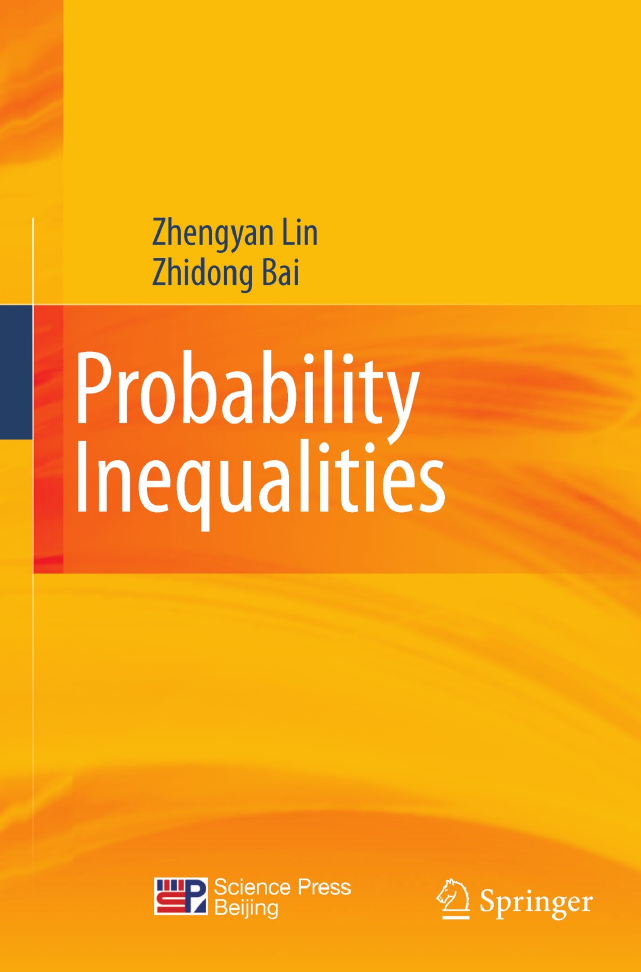

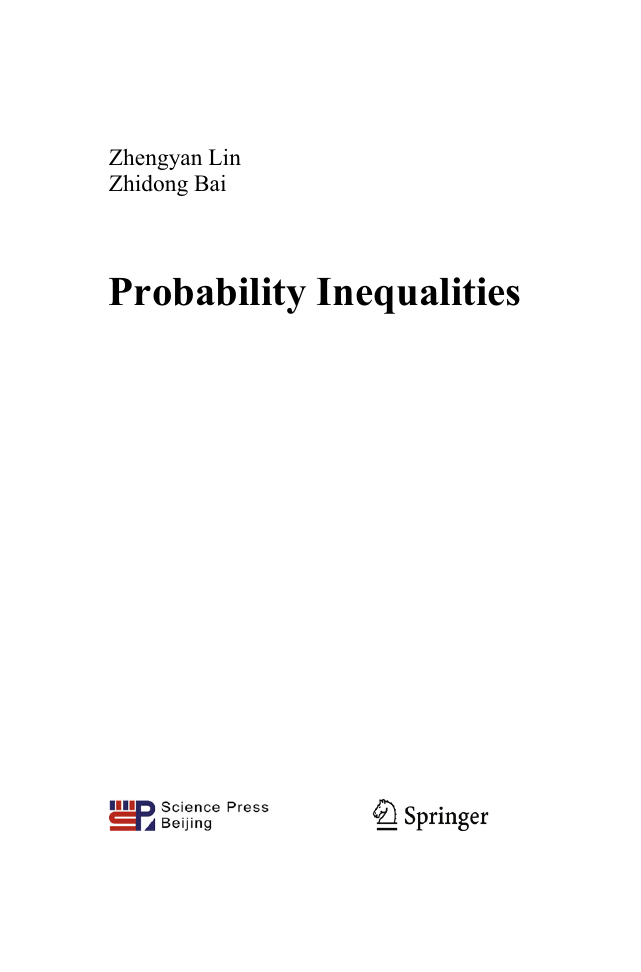
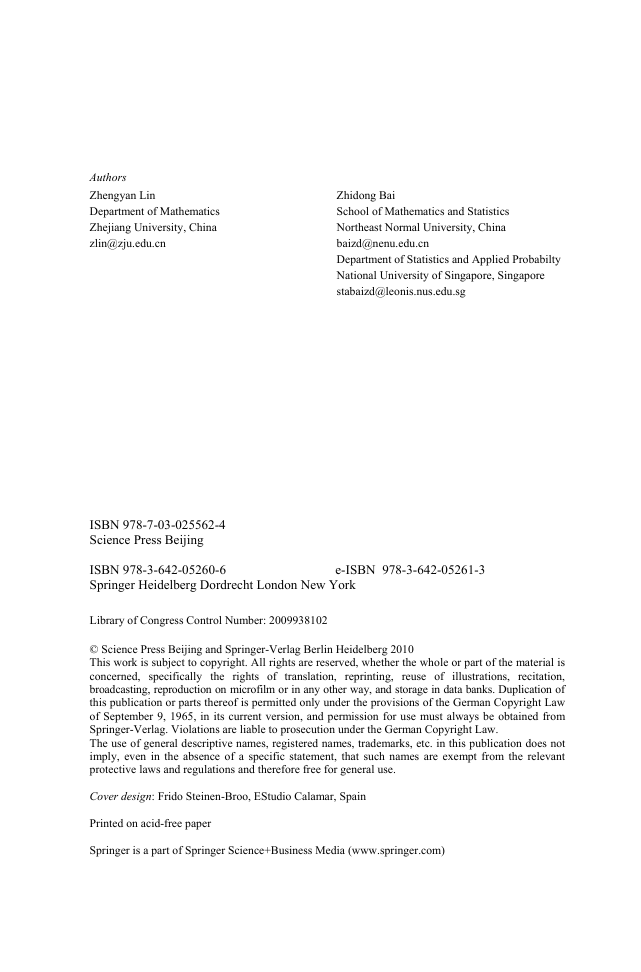
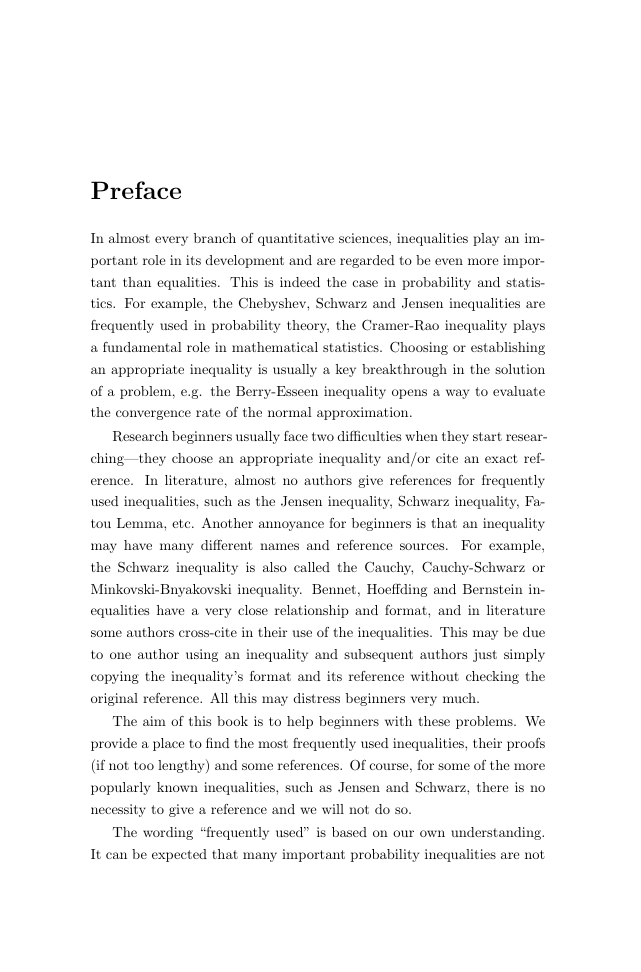
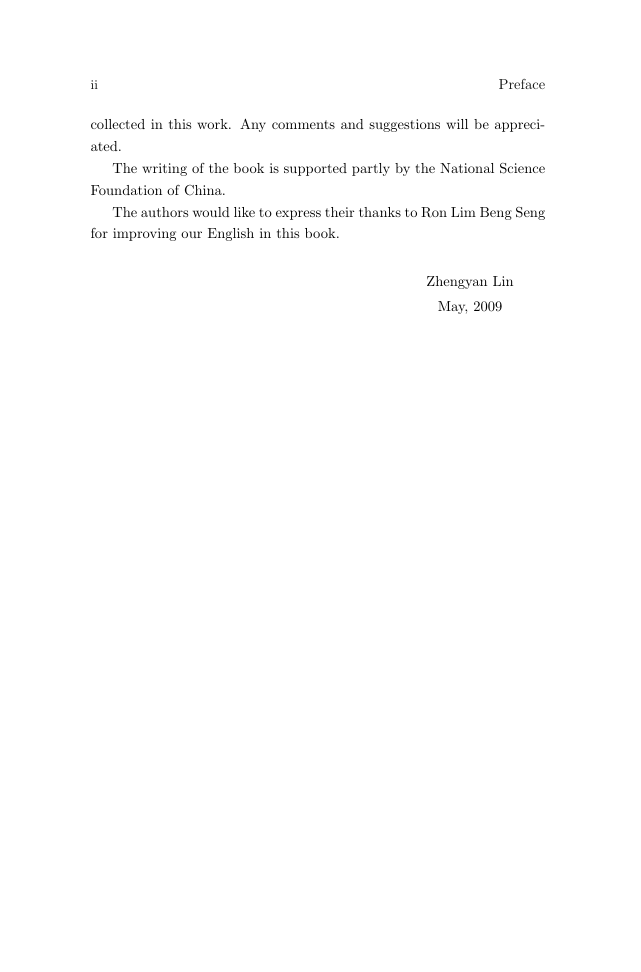
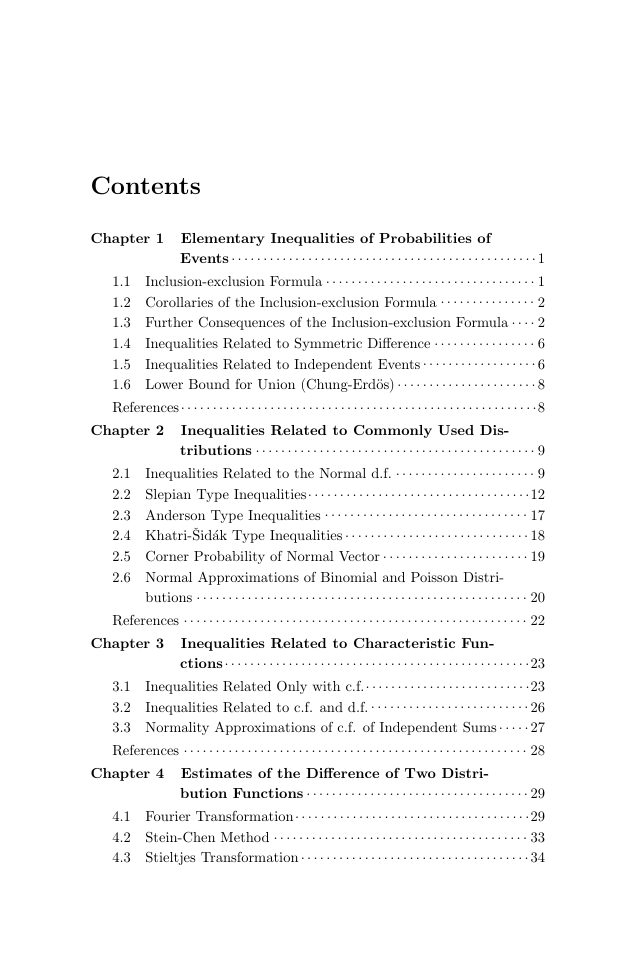
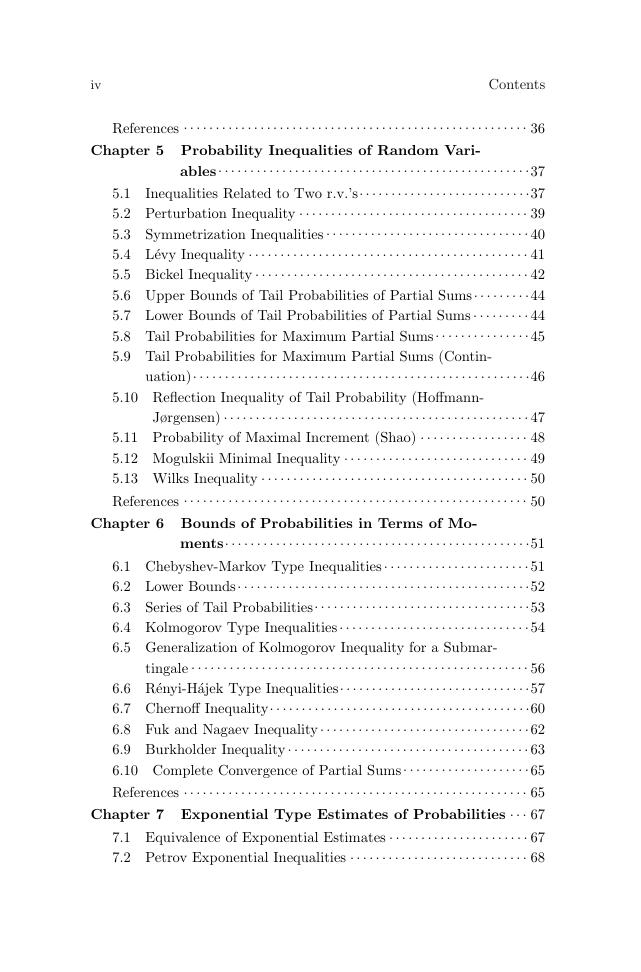








 2023年江西萍乡中考道德与法治真题及答案.doc
2023年江西萍乡中考道德与法治真题及答案.doc 2012年重庆南川中考生物真题及答案.doc
2012年重庆南川中考生物真题及答案.doc 2013年江西师范大学地理学综合及文艺理论基础考研真题.doc
2013年江西师范大学地理学综合及文艺理论基础考研真题.doc 2020年四川甘孜小升初语文真题及答案I卷.doc
2020年四川甘孜小升初语文真题及答案I卷.doc 2020年注册岩土工程师专业基础考试真题及答案.doc
2020年注册岩土工程师专业基础考试真题及答案.doc 2023-2024学年福建省厦门市九年级上学期数学月考试题及答案.doc
2023-2024学年福建省厦门市九年级上学期数学月考试题及答案.doc 2021-2022学年辽宁省沈阳市大东区九年级上学期语文期末试题及答案.doc
2021-2022学年辽宁省沈阳市大东区九年级上学期语文期末试题及答案.doc 2022-2023学年北京东城区初三第一学期物理期末试卷及答案.doc
2022-2023学年北京东城区初三第一学期物理期末试卷及答案.doc 2018上半年江西教师资格初中地理学科知识与教学能力真题及答案.doc
2018上半年江西教师资格初中地理学科知识与教学能力真题及答案.doc 2012年河北国家公务员申论考试真题及答案-省级.doc
2012年河北国家公务员申论考试真题及答案-省级.doc 2020-2021学年江苏省扬州市江都区邵樊片九年级上学期数学第一次质量检测试题及答案.doc
2020-2021学年江苏省扬州市江都区邵樊片九年级上学期数学第一次质量检测试题及答案.doc 2022下半年黑龙江教师资格证中学综合素质真题及答案.doc
2022下半年黑龙江教师资格证中学综合素质真题及答案.doc